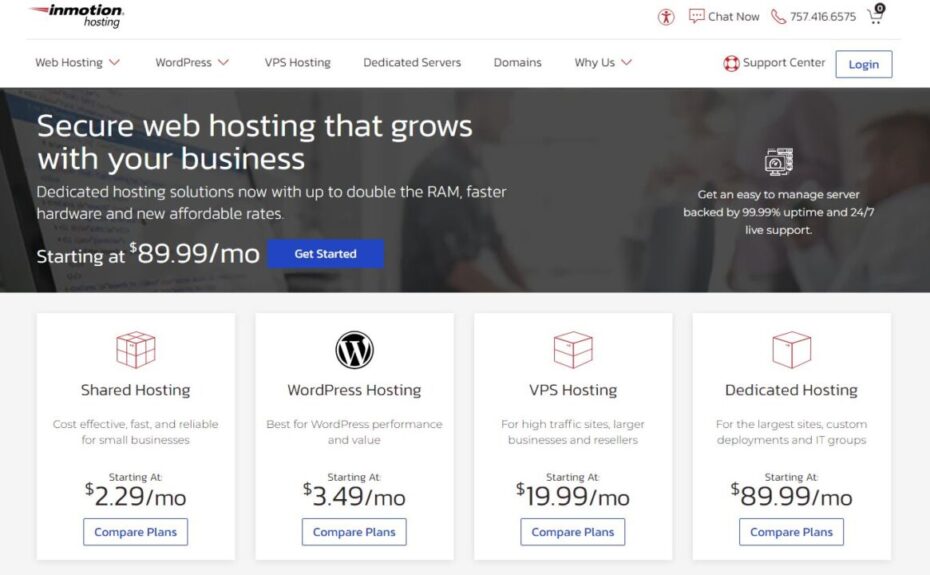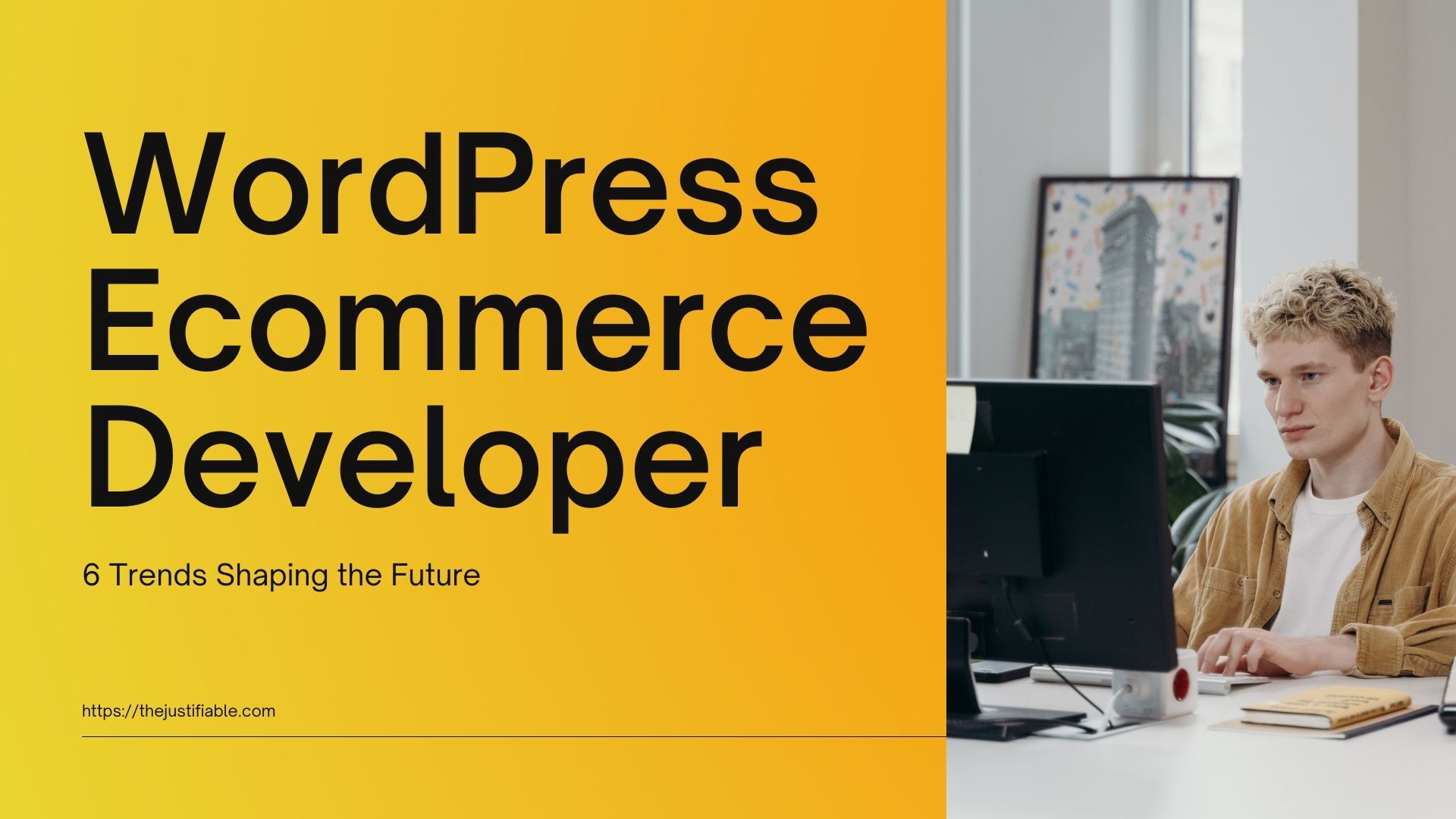Table of Contents
Are you pondering over what the future holds for WordPress eCommerce developers? How will the latest technological trends shape online shopping, and what does this mean for developers and businesses alike? As a WordPress eCommerce developer, staying ahead of the curve is not just beneficial—it’s imperative. But what trends should you focus on, and how can you leverage them to create successful, future-proof online stores?
Let’s explore how these trends can transform the eCommerce landscape and how you can start integrating them into your development practices today.
1. Unlocking New Horizons: The Rise of AI in WordPress eCommerce
How is artificial intelligence (AI) reshaping the WordPress eCommerce landscape? As we delve into the transformative power of AI within the WordPress ecosystem, it’s clear that this technology is not just a trend but a fundamental shift in how online stores operate and engage with their customers. AI’s integration into WordPress eCommerce sites is unlocking new possibilities for personalized shopping experiences, streamlined operations, and innovative marketing strategies.
Firstly, AI enhances the user experience by enabling personalized product recommendations and dynamic content. This personalization is based on user behavior, preferences, and purchase history, making each interaction unique and directly targeted to the individual’s interests. From my perspective, implementing AI-driven personalization can significantly increase customer satisfaction and loyalty. It also boosts conversion rates by presenting the most relevant products at the right time.
Moreover, AI technologies facilitate the automation of various store management tasks, such as inventory management, customer service via chatbots, and even fraud detection. This automation not only saves time for developers and store owners but also improves accuracy and efficiency.
My recommendation for WordPress eCommerce developers is to leverage AI tools to streamline operations and focus on strategic tasks that require human creativity and intuition. By doing so, developers can offer more value to their clients and enhance the overall performance of eCommerce sites.
AI-Powered Recommendations: Personalizing User Experience
What role do AI-powered recommendations play in personalizing the user experience on WordPress eCommerce sites? The advent of AI has brought about a revolution in how eCommerce sites understand and cater to individual customer needs. By analyzing vast amounts of data, AI algorithms can predict what products a user might be interested in, even before they know it themselves.
AI-powered recommendations are more than just a tool; they’re a way to create a connection with the customer. By showing that you understand their needs and preferences, you build trust and loyalty. I believe that personalized recommendations encourage customers to make more purchases and explore products they might not have found on their own. Most importantly, these recommendations need to be seamlessly integrated into the WordPress eCommerce experience, ensuring they enhance rather than intrude upon the shopping journey.
For WordPress eCommerce developers, incorporating AI-driven recommendation engines into sites can significantly improve sales and customer engagement. My suggestion is to utilize plugins and tools that are designed for WordPress, ensuring compatibility and ease of integration. This approach not only personalizes the shopping experience but also sets your eCommerce site apart in a crowded market.
Automating Store Management: Saving Time for Developers
How does automating store management with AI save time for WordPress eCommerce developers? Automation in the context of WordPress eCommerce involves using AI to handle repetitive and time-consuming tasks. This includes inventory management, order processing, customer inquiries, and even marketing tasks like email campaign automation.
By automating these aspects, developers can dedicate more time to improving the website’s user experience, adding new features, or customizing the site to meet specific business needs.
AI-driven automation tools are designed to enhance efficiency and accuracy. For instance, inventory management can be optimized to reduce overstocking or stockouts, and AI chatbots can provide instant customer support 24/7. This level of automation not only saves time but also reduces the margin for error, leading to a smoother operation and higher customer satisfaction.
In my view, the strategic integration of automation tools within WordPress eCommerce sites is essential. My recommendation for developers is to start with areas that have the highest administrative overhead or where human error is most common.
By automating these tasks, developers can not only improve operational efficiency but also focus on more creative aspects of site development, enhancing the overall value delivered to clients.
2. Mobile-First Design: Essential for WordPress eCommerce Success
Did you know that over half of the internet traffic now comes from mobile devices? This staggering statistic underlines the critical importance of mobile-first design for WordPress eCommerce sites. In today’s digital landscape, ensuring your online store is optimized for mobile isn’t just a nice-to-have; it’s a must-have. A mobile-first approach ensures that the vast majority of your users receive the best possible experience, no matter the device they use.
Adopting a mobile-first design for your WordPress eCommerce site means prioritizing the mobile user experience from the start. This approach is crucial for engaging the growing number of users who browse and shop exclusively on mobile devices.
I believe that focusing on mobile usability, load times, and responsive design can significantly enhance user satisfaction and conversion rates. Mobile-first design not only meets user expectations but also aligns with Google’s mobile-first indexing, which prioritizes mobile-optimized sites in search rankings.
Moreover, a mobile-first WordPress eCommerce site can lead to better performance and lower bounce rates. In my view, ensuring your site is intuitive and easy to navigate on a small screen, with fast loading times and easily accessible information, is key to capturing and retaining customer interest.
My recommendation is to start the design process with mobile in mind to ensure all elements of your site are optimized for mobile users. This strategic focus will make your WordPress eCommerce site more competitive and successful in the mobile-dominated online marketplace.
Crafting Responsive Themes: A Necessity, Not a Choice
In today’s digital age, where device diversity is at an all-time high, crafting responsive themes for WordPress eCommerce sites has transcended from being a choice to a necessity. Responsive design ensures that your eCommerce site automatically adjusts its layout, images, and content to match the screen size on which it is viewed, providing an optimal viewing experience across a wide range of devices.
Implementing responsive themes is critical for ensuring that your WordPress eCommerce site is accessible and appealing to all users, regardless of their device. This adaptability not only improves user experience but also contributes to higher engagement and conversion rates. From my perspective, responsive design is one of the most effective ways to cater to mobile users, who represent a significant portion of online shoppers today.
Responsive themes also play a vital role in SEO strategy. Google prioritizes mobile-friendly websites in its search results, making responsive design a key factor in achieving better rankings. I strongly believe that investing in a responsive WordPress theme is a smart decision for any eCommerce business. It not only enhances user experience but also supports your site’s SEO efforts.
My suggestion for WordPress eCommerce developers and store owners is to prioritize responsive design from the outset, ensuring that their sites are future-proof and ready to meet the demands of the ever-evolving digital landscape.
Enhancing Mobile Checkout: Streamlining Sales on the Go
The checkout process is the culmination of the online shopping experience, and its efficiency is paramount, especially on mobile devices. A streamlined mobile checkout can significantly reduce cart abandonment rates and increase conversions. Given the smaller screen size and the on-the-go nature of mobile shopping, simplifying the checkout process becomes crucial.
Enhancing mobile checkout involves reducing the number of steps required to complete a purchase, offering multiple payment options, and ensuring that forms are easy to fill out on a mobile device. My recommendation is to incorporate features such as one-click purchasing and the ability to save payment information securely. This not only speeds up the process for returning customers but also makes the checkout experience more user-friendly for new ones.
In my estimation, providing a seamless mobile checkout experience is one of the most effective ways to boost sales and customer loyalty in WordPress eCommerce. According to research, sites with optimized checkout processes can see significant improvements in conversion rates.
From my point of view, focusing on creating a frictionless mobile checkout experience is essential for any WordPress eCommerce site looking to succeed in the competitive online marketplace. Implementing these changes can make a substantial difference in how customers perceive your brand and can turn casual browsers into loyal customers.
3. The Green Revolution: Eco-Friendly WordPress eCommerce Sites
“The Earth does not belong to us: we belong to the Earth.” This profound statement reminds us of the importance of sustainability in every aspect of our lives, including how we conduct business online. For WordPress eCommerce developers and site owners, embracing the green revolution isn’t just about protecting the environment—it’s also about meeting the growing consumer demand for eco-friendly businesses.
Adopting eco-friendly practices for WordPress eCommerce sites can significantly reduce their environmental impact while enhancing brand reputation. I recommend starting with sustainable web hosting, which uses renewable energy or carbon offsetting to power servers.
Additionally, optimizing website efficiency reduces energy consumption, which is not only good for the planet but also improves site speed and user experience. In my view, these changes are essential for any eCommerce site that aims to be competitive and conscientious in today’s market.
Moreover, developing eco-friendly WordPress eCommerce sites can lead to a positive feedback loop: as businesses reduce their environmental footprint, they attract more eco-conscious consumers, which in turn encourages other companies to adopt sustainable practices.
I believe that by making eco-friendly choices, WordPress eCommerce developers can lead by example, demonstrating that sustainability and success in the digital world are not mutually exclusive. From my perspective, the green revolution in eCommerce is not just a trend; it’s a crucial shift towards a more sustainable and responsible online marketplace.
Sustainable Hosting Solutions: The Path Forward
“In the end, our society will be defined not only by what we create but by what we refuse to destroy.” This quote underscores the importance of sustainable hosting solutions for WordPress eCommerce sites. As the digital footprint of businesses grows, so does the environmental impact of online operations. Choosing a sustainable hosting provider is a crucial step towards reducing this impact.
Sustainable hosting providers power their data centers with renewable energy or purchase carbon offsets, significantly reducing the carbon footprint of the websites they host. I strongly believe that switching to a green web host is one of the easiest yet most effective steps a WordPress eCommerce site can take towards sustainability. It’s a clear demonstration of a business’s commitment to environmental responsibility, appealing to increasingly eco-conscious consumers.
Web Hosting Recommendations
 Hostgator
|  Inmotion
|  Hostinger
|
Furthermore, sustainable hosting often comes with the added benefit of improved site performance and reliability, as many green hosting companies invest in cutting-edge technology.
From my point of view, choosing a sustainable hosting solution is not just about being eco-friendly; it’s also about ensuring your WordPress eCommerce site is built on a solid, future-proof foundation. My recommendation is clear: if you’re looking to reduce your digital footprint while enhancing your site’s performance, sustainable hosting is the way forward.
Minimizing Digital Carbon Footprint: Optimization Techniques
“Every small change contributes to a big difference.” This philosophy is key when it comes to minimizing the digital carbon footprint of WordPress eCommerce sites. In an age where digital sustainability is becoming as important as physical sustainability, implementing optimization techniques to reduce the energy consumption of your website is crucial.
Optimizing images, leveraging caching, and minimizing code bloat are effective strategies to reduce the amount of data transferred and processed, thereby lowering energy use. I would say that optimizing your WordPress eCommerce site not only benefits the environment by reducing its carbon footprint but also improves site speed and user experience—factors that are directly linked to higher conversion rates and customer satisfaction.
In my estimation, adopting a minimalist design approach can further reduce energy consumption by simplifying user interfaces and focusing on essential elements. This not only aids in faster loading times but also creates a cleaner, more user-friendly shopping experience.
From my perspective, every WordPress eCommerce developer should consider these optimization techniques not just as best practices for sustainability, but as essential components of creating efficient, high-performing websites that are prepared to meet the demands of the future.
4. Voice Search Optimization: Speaking the Language of Shoppers
As we venture deeper into the digital age, voice search optimization becomes a pivotal aspect of eCommerce success. It’s fascinating to note that nearly 50% of all searches will be voice searches by the end of the year. This statistic highlights the evolving nature of consumer behavior and underscores the importance of integrating voice search optimization into WordPress eCommerce strategies. Voice search not only enhances user experience but also opens new avenues for reaching potential customers.
First and foremost, optimizing for voice search involves understanding the natural language patterns of your target audience. People tend to use longer, more conversational phrases when using voice search compared to typing. Therefore, including such long-tail keywords in your content can significantly improve your visibility.
I strongly believe that by optimizing your WordPress eCommerce site for voice search, you can tap into a growing market segment that prefers using voice assistants for shopping online. This approach can lead to increased traffic and improved conversion rates.
Moreover, ensuring that your business information is accurately listed and easily accessible is crucial for voice search optimization. Voice searches are often used to find local business information, so including local keywords and maintaining up-to-date contact information can boost your visibility in local search results.
From my perspective, adopting a voice search optimization strategy is not just about keeping up with technological advancements; it’s about proactively enhancing your eCommerce site to meet and exceed consumer expectations. My recommendation to WordPress eCommerce developers is to prioritize voice search optimization as a key component of their overall SEO and content strategy.
Integrating Voice Search Capabilities: A Step-by-Step Guide
Integrating voice search capabilities into your WordPress eCommerce site might seem daunting, but it’s a straightforward process that can significantly enhance user experience. The first step involves conducting keyword research with a focus on conversational language. Understanding the types of questions and phrases your target audience uses can inform the content you create, making it more likely to appear in voice search results.
Next, optimizing your site’s content for voice search is crucial. This means crafting informative, conversational content that answers specific questions your audience might ask. Structuring content with clear, concise headers and including a FAQ section on your site can be particularly effective. I suggest using tools specifically designed for voice search optimization, as they can provide valuable insights into how your content performs in voice searches and where improvements can be made.
Finally, ensuring your site is mobile-friendly and loads quickly is essential, as most voice searches are performed on mobile devices. Improving site speed and mobile responsiveness can greatly enhance your site’s voice search optimization. According to my experience, taking these steps not only makes your site more accessible to voice search users but also improves overall user experience, leading to higher engagement and conversion rates.
I recommend WordPress eCommerce developers take the time to integrate voice search capabilities thoroughly, as it can provide a competitive edge in an increasingly voice-driven market.
Adjusting Content Strategy for Voice Queries: Key Considerations
Adjusting your content strategy to accommodate voice queries is an essential move for WordPress eCommerce sites aiming to stay ahead in the digital marketplace. Voice search queries often differ significantly from text-based searches, tending towards more natural, conversational language. This shift necessitates a more nuanced approach to content creation and optimization.
Firstly, it’s important to create content that directly answers the questions potential customers might ask through voice search. This involves adopting a more conversational tone and focusing on long-tail keywords that mimic how people talk. I believe that creating content that sounds natural when read aloud can significantly improve its performance in voice search results. Incorporating question-based headings and subheadings within your content can also make it more discoverable via voice search.
Moreover, local SEO becomes increasingly important when optimizing for voice queries. Many voice searches are local in nature, as users often look for products or services near them. Ensuring your business’s local listings are accurate and complete, and including location-specific keywords in your content, can enhance your visibility in these searches.
From my point of view, adapting your content strategy for voice search is not just about following a trend; it’s about meeting your customers where they are and providing them with the information they need in the most convenient format. My recommendation for WordPress eCommerce developers is to embrace these key considerations as they refine their content strategies for the era of voice search.
5. Augmented Reality (AR) Shopping Experiences: The Future is Now
Imagine walking into a brick-and-mortar store and being able to see how a piece of furniture looks in your living room before making a purchase. Now, transpose that experience to the online world—this is what Augmented Reality (AR) shopping experiences offer to the digital consumer. As the line between physical and digital shopping experiences blurs, AR in WordPress eCommerce sites stands out as a transformative technology, shaping the future of online shopping by merging the convenience of online shopping with the tangibility of physical stores.
Implementing AR technology in WordPress eCommerce sites allows customers to visualize products in their own space before making a purchase decision. This not only enhances the shopping experience but also significantly reduces the likelihood of returns. From my point of view, the ability to virtually try on clothes, preview furniture in a room, or see how a piece of jewelry looks can dramatically increase consumer confidence and satisfaction.
However, integrating AR requires a thoughtful approach to technology selection and user interface design. My suggestion for WordPress eCommerce developers is to start small with AR features that add the most value to their specific audience and gradually expand as technology and user adoption evolve.
Furthermore, AR technology can provide valuable insights into customer preferences and behavior, enabling businesses to tailor their offerings and marketing strategies more effectively. Despite the challenges of adopting new technology, including development costs and the need for user education, the benefits of AR in enhancing user engagement and conversion rates cannot be overstated.
In my estimation, businesses that embrace AR technology now will be well-positioned to lead in the increasingly competitive eCommerce landscape. It seems to me that AR shopping experiences are not just a futuristic concept but a present reality that can differentiate and elevate an eCommerce brand.
Implementing AR for Product Visualization: Benefits and Challenges
Augmented Reality (AR) has revolutionized the way customers interact with products online, akin to trying them out in person. Implementing AR for product visualization on WordPress eCommerce sites offers a plethora of benefits, including improved customer satisfaction through enhanced interaction with products.
This immersive technology allows customers to see how products would fit and look in their own environment, significantly reducing uncertainty and the likelihood of returns. Most importantly, it provides a competitive edge, setting your eCommerce site apart from those not leveraging this innovative technology.
However, the journey of integrating AR into an eCommerce platform comes with its set of challenges. The initial setup, for instance, requires a significant investment in technology and content creation, as each product needs a corresponding AR model. There’s also the need for continuous updates and maintenance to ensure compatibility across various devices and operating systems.
From my perspective, the key to overcoming these challenges lies in starting with a clear strategy, focusing on products that will most benefit from AR visualization, and gradually expanding the AR experience based on customer feedback and technological advancements.
Despite these hurdles, the benefits of implementing AR for product visualization are undeniably compelling. Increased engagement, higher conversion rates, and a unique shopping experience are just the tip of the iceberg. I recommend eCommerce businesses to view AR not just as a marketing tool but as an investment in customer experience and brand differentiation.
From my point of view, the future of eCommerce is visual and interactive, and AR is the bridge to that future. If you ask me, embracing AR today is a step towards securing a prominent place in the marketplace of tomorrow.
Enhancing Customer Engagement: Real-World Success Stories
The impact of Augmented Reality (AR) on enhancing customer engagement is not just theoretical; real-world success stories abound, showcasing the transformative power of this technology in the eCommerce space. Brands across various sectors, from fashion to furniture, have witnessed remarkable improvements in engagement, conversion rates, and customer loyalty after integrating AR into their online shopping experiences. Most importantly, these stories highlight the practical application and real-world benefits of AR, proving its efficacy beyond doubt.
For instance, a furniture retailer implemented AR to allow customers to visualize how products would look in their homes, resulting in a significant uptick in sales and a decrease in return rates. Similarly, a fashion brand introduced an AR feature for virtual try-ons, leading to increased customer satisfaction and higher conversion rates, as shoppers were more confident in their purchase decisions. These examples underscore the fact that AR can be a game-changer, transforming how customers interact with products and brands online.
From my point of view, these success stories serve as a powerful testament to the potential of AR in eCommerce. They illustrate not just the immediate benefits of enhanced engagement and sales but also long-term advantages in building brand loyalty and reputation.
My recommendation to WordPress eCommerce developers and business owners is to look to these success stories as inspiration and motivation to explore how AR can be integrated into their own online platforms. In my estimation, investing in AR is investing in the future of eCommerce, where immersive, personalized shopping experiences become the norm, not the exception.
6. Blockchain Technology: Securing WordPress eCommerce Platforms
While blockchain technology is often hailed as a revolution in financial transactions and data security, its application in securing WordPress eCommerce platforms is still gaining traction. This technology offers an unparalleled level of security through decentralization and encryption, making it increasingly attractive to online retailers looking for ways to enhance trust and protect their customers’ data.
As eCommerce continues to evolve, integrating blockchain technology into WordPress platforms presents a forward-thinking approach to addressing some of the most pressing security challenges faced by online businesses today.
Integrating blockchain into WordPress eCommerce platforms can significantly reduce the risk of data breaches and fraud. By leveraging blockchain’s immutable ledger, every transaction on an eCommerce site can be securely recorded, verified, and stored.
This level of security not only protects against unauthorized access but also builds consumer confidence, as customers know their personal and payment information is safe. From my perspective, the adoption of blockchain technology is not just a security measure; it’s a strategic move that can enhance the overall reputation of an eCommerce business.
Moreover, blockchain technology can streamline operations and reduce costs associated with traditional payment processing methods. Transactions on the blockchain are direct and require no intermediaries, leading to faster processing times and lower fees. For WordPress eCommerce sites, this means the ability to offer customers more efficient and cost-effective purchasing experiences.
I strongly believe that as blockchain technology becomes more accessible, its integration into eCommerce platforms will become a standard, not just an option. In my view, WordPress eCommerce developers should start exploring blockchain solutions now, to stay ahead in a competitive digital marketplace.
Understanding Blockchain’s Role in eCommerce Security
Blockchain technology is often associated with cryptocurrencies, but its role in eCommerce security goes far beyond facilitating secure transactions. At its core, blockchain provides a decentralized database or ledger that is virtually tamper-proof, offering a revolutionary approach to securing online transactions and customer data. This technology ensures that once a transaction is recorded, it cannot be altered or deleted, making it an invaluable tool for fraud prevention in the eCommerce sphere.
For WordPress eCommerce sites, implementing blockchain means adding an extra layer of security that protects against data breaches, identity theft, and payment fraud. This is particularly important in an era where consumer trust can be a brand’s most valuable asset.
According to my estimation, leveraging blockchain technology can significantly mitigate the risks associated with online transactions, giving customers peace of mind when shopping online. It’s a powerful way to demonstrate a commitment to security and transparency, setting a platform apart from competitors.
Furthermore, blockchain’s distributed nature means that data is not stored in a central location but across a network of computers, making it nearly impossible for hackers to compromise the integrity of the data. From my perspective, this aspect of blockchain is crucial for eCommerce platforms that handle sensitive customer information and financial transactions daily.
My recommendation for WordPress eCommerce platforms is to consider blockchain not just as a technology of the future, but as a practical solution to today’s security challenges, paving the way for safer and more secure online shopping experiences.
Simplifying Transactions: Blockchain for Payment Processing
Blockchain technology is revolutionizing payment processing in the eCommerce sector, offering solutions that are not only more secure but also more efficient than traditional methods. By facilitating direct transactions between buyers and sellers without the need for intermediaries, blockchain can significantly reduce transaction fees and processing times. This is a game-changer for WordPress eCommerce platforms, where reducing overhead costs and improving customer experience are constant objectives.
Integrating blockchain for payment processing means that transactions are verified and recorded in real-time on a secure, immutable ledger. This not only enhances security but also provides transparency, as both parties have access to transaction records. For consumers, this translates to a smoother, more reliable shopping experience with instant payment verification and no hidden fees. From my point of view, this level of efficiency and transparency is what modern online shoppers expect and demand.
Moreover, blockchain opens up new possibilities for international transactions by making them more accessible and less expensive. Traditional cross-border payments often involve high fees and long waiting times, but blockchain technology can streamline these processes, making it easier for WordPress eCommerce platforms to expand their global reach.
I believe that adopting blockchain for payment processing is a strategic move that can significantly enhance operational efficiency and customer satisfaction. My suggestion for eCommerce businesses is to embrace blockchain technology, not just to stay competitive, but to redefine what’s possible in the realm of online transactions.
Frequently Asked Questions (FAQ)
What does a WordPress eCommerce developer do?
A WordPress eCommerce developer specializes in building and customizing eCommerce websites using the WordPress platform. They focus on integrating eCommerce plugins like BigCommerce to create online stores. Their tasks include setting up payment gateways, designing product pages, ensuring site security, and optimizing for SEO and performance.
Why should I hire a WordPress eCommerce developer?
Hiring a WordPress eCommerce developer ensures your online store is professionally built and customized to your specific needs. They provide expertise in plugin integration, customization, and security, which can significantly enhance user experience and increase sales. Their knowledge helps in optimizing your site for better performance and search engine rankings.
How much does it cost to hire a WordPress eCommerce developer?
The cost of hiring a WordPress eCommerce developer varies based on the project’s complexity, the developer’s experience, and your specific requirements. On average, rates can range from $30 to $150 per hour. For a complete eCommerce site, expect to invest between $1,000 and $10,000, depending on customizations and features.
What skills should a good WordPress eCommerce developer have?
A proficient WordPress eCommerce developer should have strong skills in HTML, CSS, JavaScript, PHP, and MySQL. They should be adept at using WooCommerce and other eCommerce plugins, understanding SEO, and have a good eye for UI/UX design. Problem-solving abilities and experience in site security and performance optimization are also crucial.
How long does it take to develop a WordPress eCommerce site?
The development time for a WordPress eCommerce site depends on the project’s scope. A basic online store might take 2-4 weeks, while a more complex site with custom features could take 2-3 months. Factors such as design requirements, number of products, and integration of third-party services impact the timeline.
Can a WordPress eCommerce developer help with SEO?
Yes, a skilled WordPress eCommerce developer can significantly improve your site’s SEO. They ensure your website is SEO-friendly by optimizing the site’s structure, improving load times, implementing schema markup, and integrating SEO plugins like AIOSEO. Their work helps your site rank better in search engine results.
What is the difference between a WordPress developer and a WordPress eCommerce developer?
A WordPress developer focuses on building and customizing WordPress websites, handling general themes, plugins, and site maintenance. A WordPress eCommerce developer specializes in creating online stores, with expertise in eCommerce plugins like WooCommerce, payment gateways, and product management, tailoring their skills to the needs of eCommerce businesses.
What eCommerce plugins do WordPress eCommerce developers commonly use?
WordPress eCommerce developers frequently use plugins like WooCommerce, Easy Digital Downloads, Shopify, BigCommerce, and MemberPress. These plugins offer features such as product management, payment processing, shipping options, and customer management, making them essential for building functional eCommerce websites.
How do WordPress eCommerce developers ensure website security?
WordPress eCommerce developers implement several measures to secure websites, including using SSL certificates, regular updates of WordPress core, themes, and plugins, setting up firewalls, implementing two-factor authentication (2FA), and conducting regular security audits. They also ensure secure payment gateways and data encryption to protect customer information.
Can a WordPress eCommerce developer customize my online store’s design?
Absolutely. A WordPress eCommerce developer can customize your online store’s design to match your brand and provide a seamless user experience. They can create custom themes, modify existing ones, and implement specific design elements and features to make your store unique and user-friendly.






